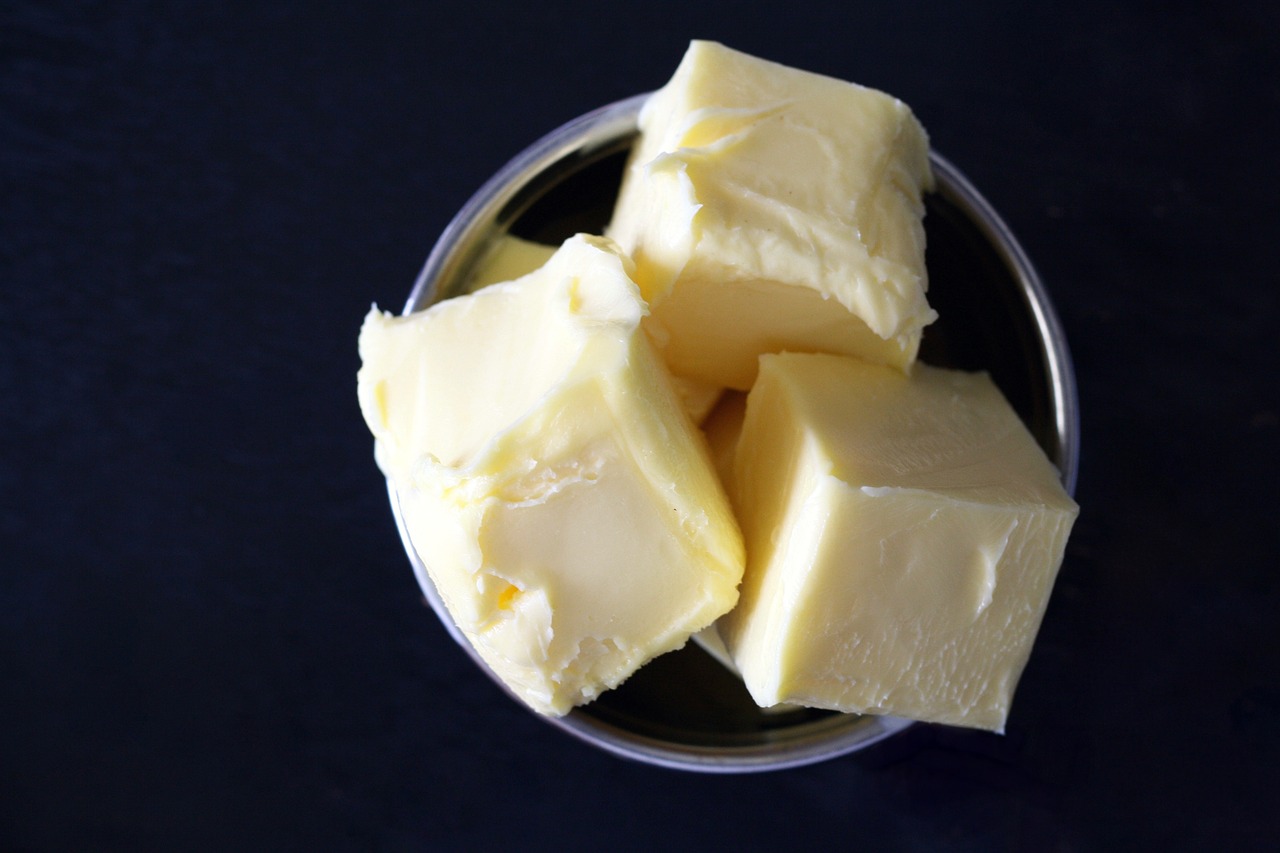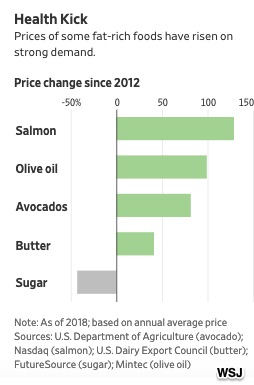During the past seven years, the price of Italian olive oil has doubled. Almost at the same time, we saw salmon cost us 60% more. Butter too is more expensive. As the world’s largest butter exporter, New Zealand has seen demand rise by 50%. Meanwhile, world butter consumption increased by 13% from 2013 to 2018.
You can see the common denominator.
Fat.
Fat used to be bad. Now, not necessarily.
What We Eat
Between 1970 and 2014, we ate more of most food groups. While the numbers in the following graphic are based on availability, the FDA (Food and Drug Administration) concluded that they reflected consumption:
Looking closely at the food groups reveals that some of our tastes have also changed. Mango and broccoli demand have surged while we seem to prefer less of more traditional fruits like oranges, grapefruits, peaches and plums. The constant? The apples, melons, and bananas that we keep buying.
The most significant difference though is more fat. Accelerating the trend is the new conventional wisdom and perhaps research that certain fats are good for us. The result is more demand for olive oil, salmon, almonds, and yes, avocados.
We seem to have moved from butter to margarine and now back to butter again:
Price
An economist at the OECD tells us that worldwide preference for fattier food has gone up faster than anyone expected. The result is classic supply and demand. Prices increased because supply could not keep up:
Our Bottom Line: Regulatory Policy
Meanwhile the FDA has had to respond to our new eating habits. During the next several years we will have more realistic calorie and nutrient labels. Rather than making us feel good with the calories for one serving, food labels will indicate the “supersize” portions we really consume. By eliminating the line with total calories from fat, they will help us distinguish between good and bad fat. Also, the FDA has been reconsidering what “healthy” means.
Starting with the largest food companies, in 2020 and 2021, the new labels will be required.
My sources and more: WSJ had the good overview for the resurgence of fat. Quartz had more on butter. Completing the picture, Vox looked at how our diets have changed. Then, Popular Science had the last step with the regulatory response.
Our featured image is from Pixabay.









